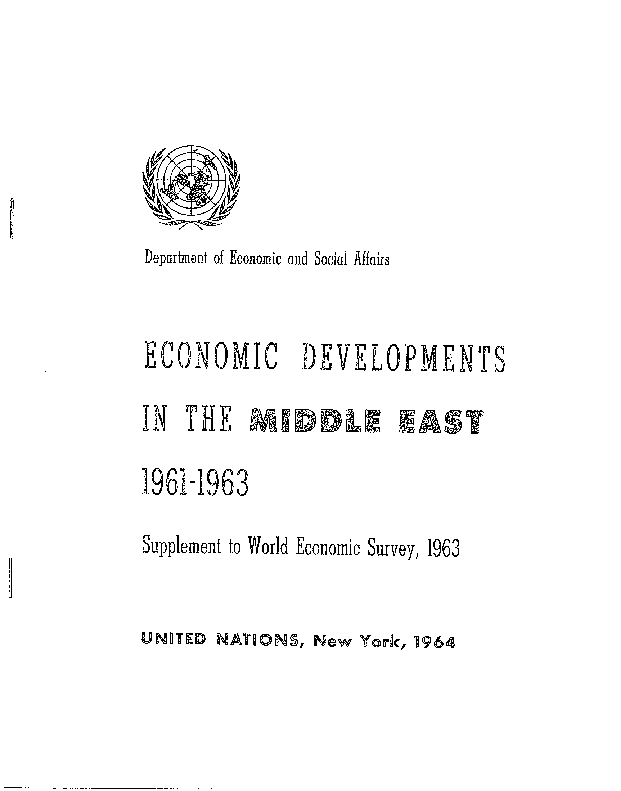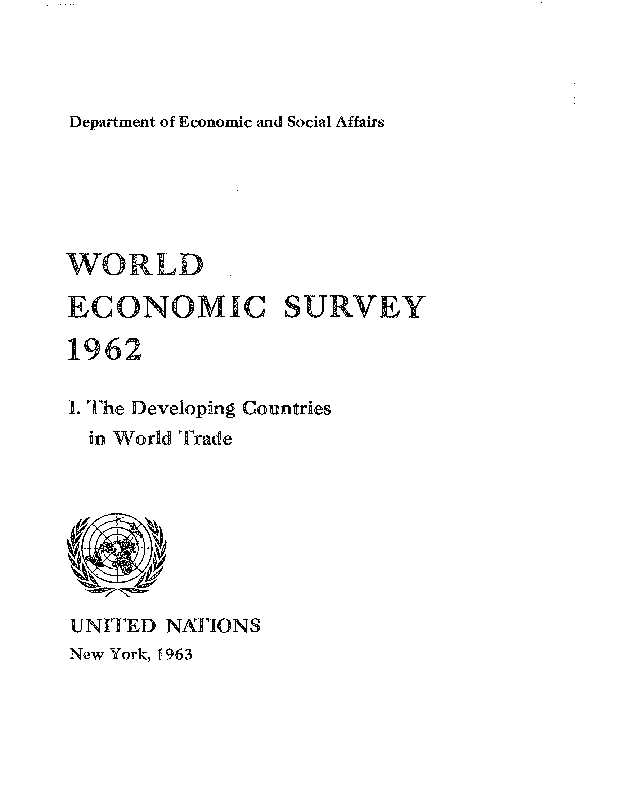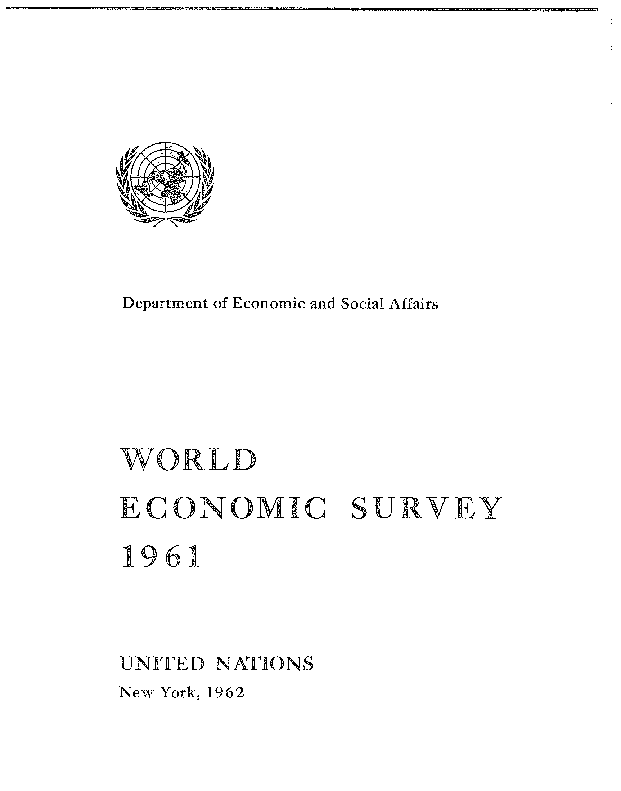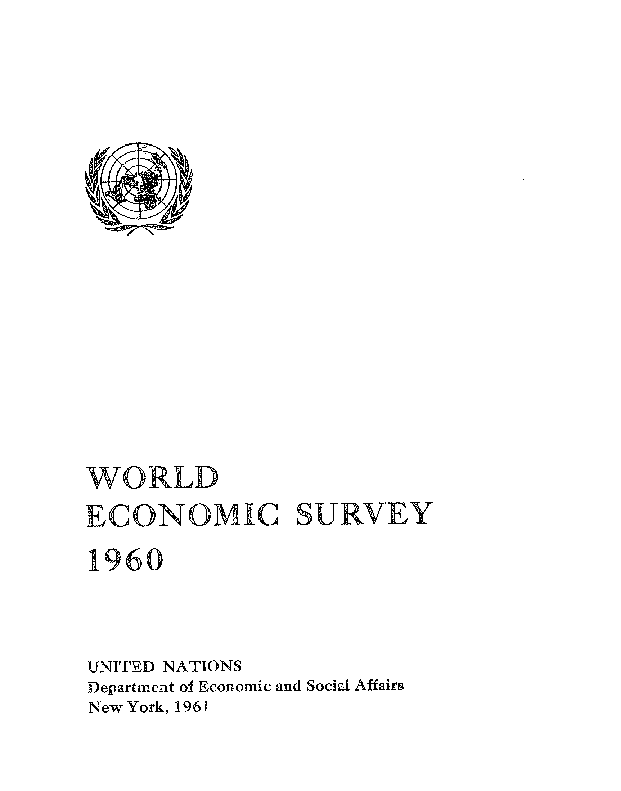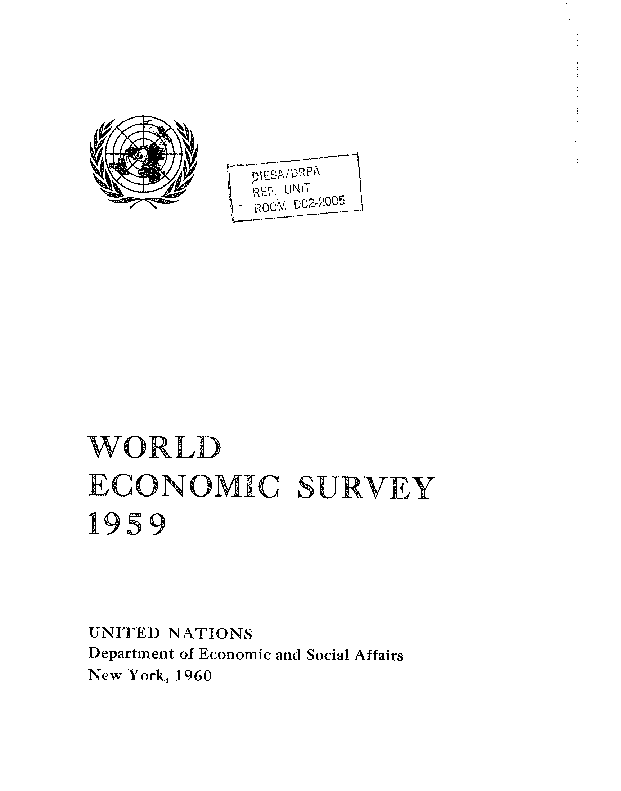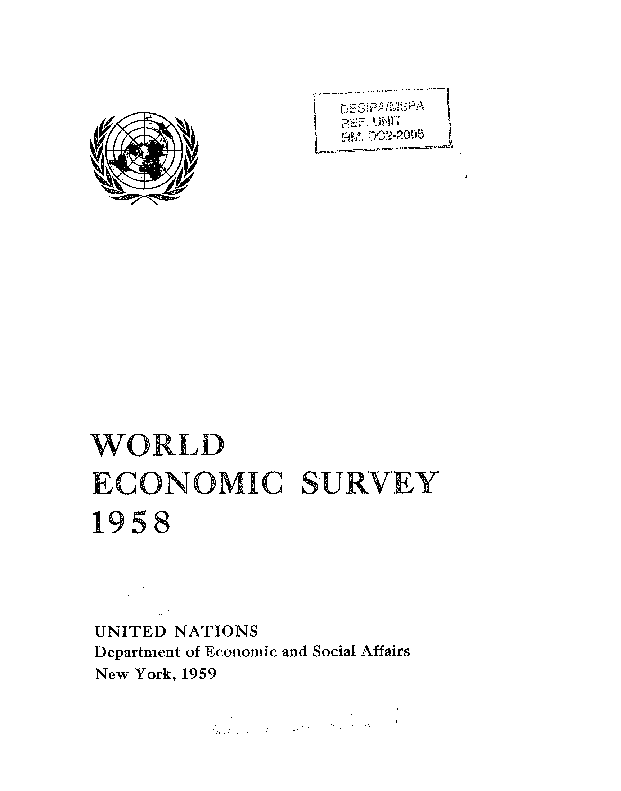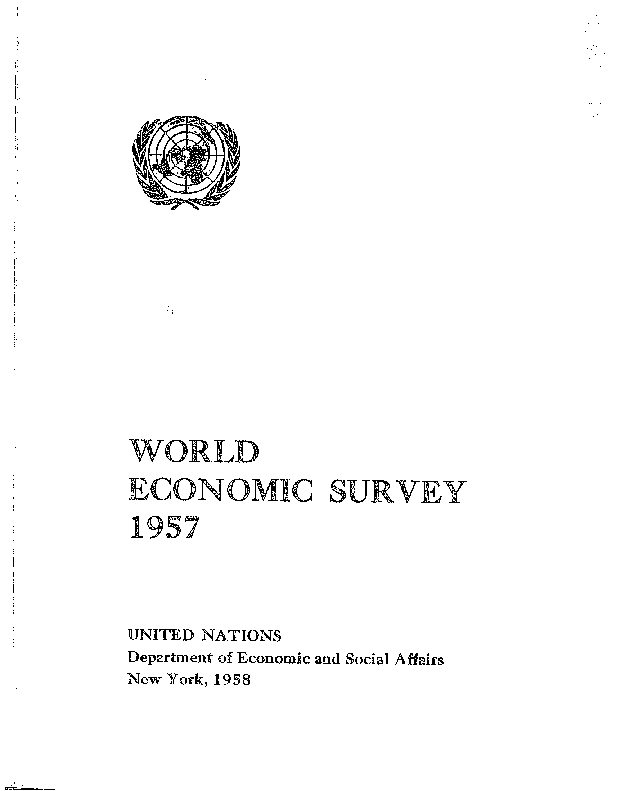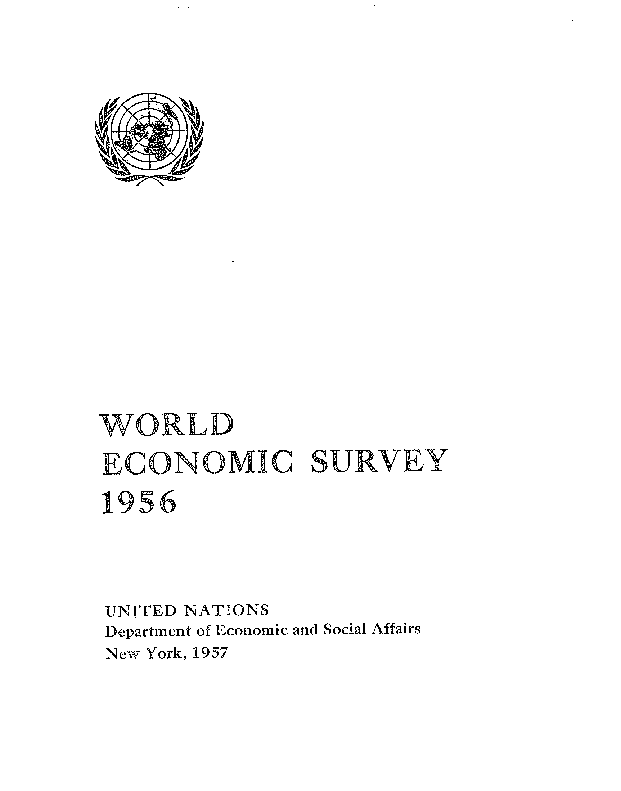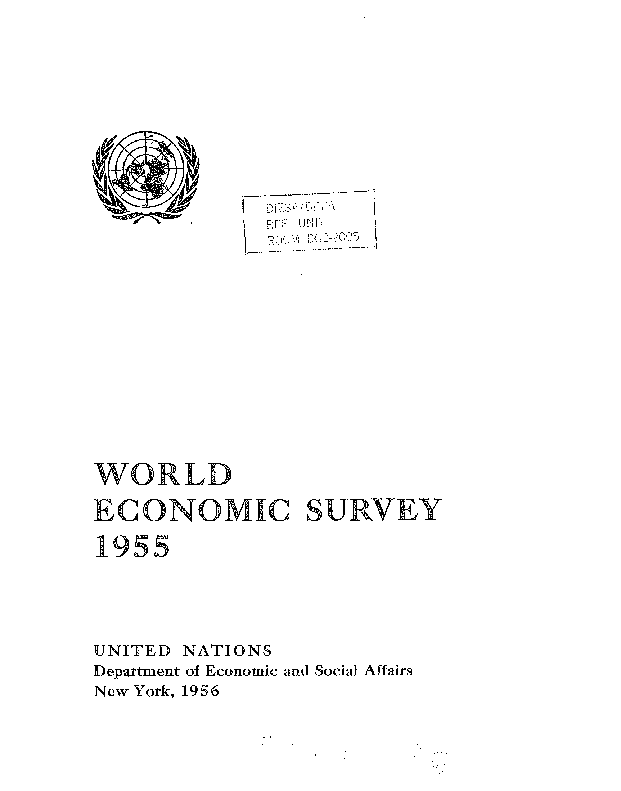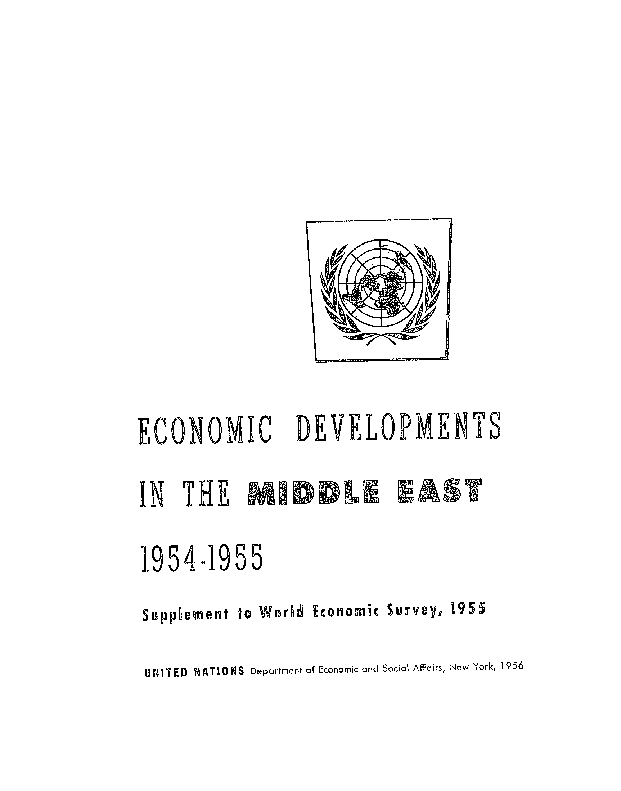Publications
Displaying 61 - 70 of 95
Part one of World Economic Survey 196 3 presents the second series of papers prepared for discussion at the second session (May?June 1963) of the Preparatory Committee fo
Part one of World Economic Survey 1962 presents the first series of papers prepared for discussion at the second session (May-June 1963) of the Preparatory Committee for the Unite
 Welcome to the United Nations
Welcome to the United Nations
